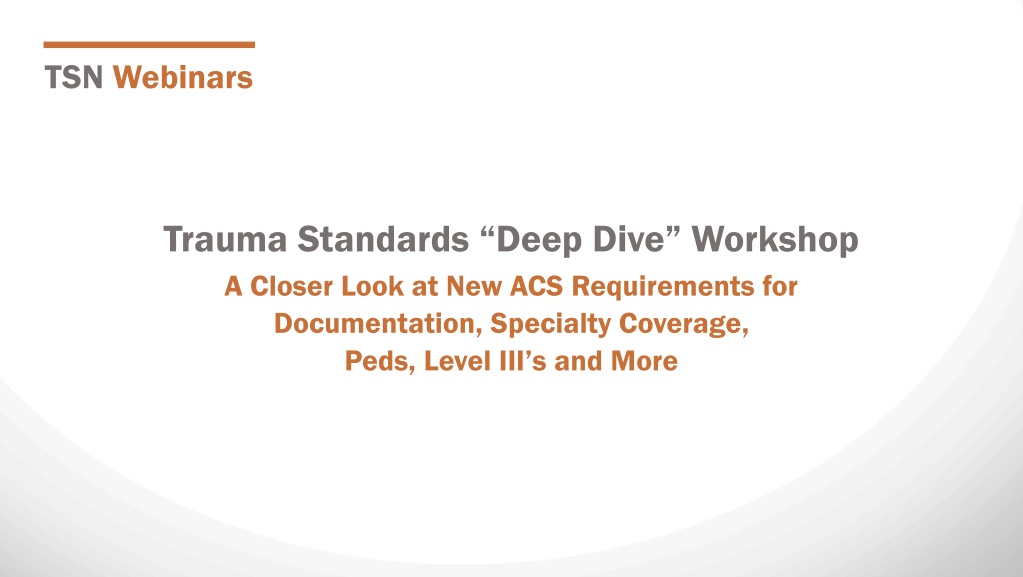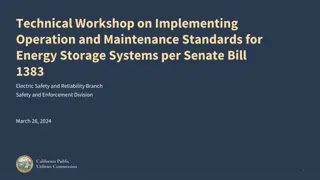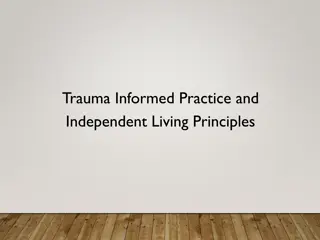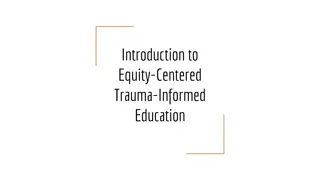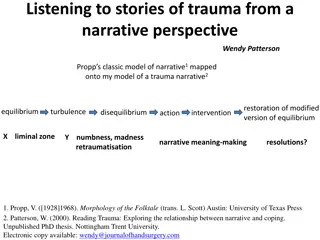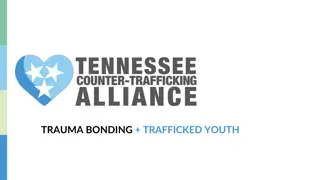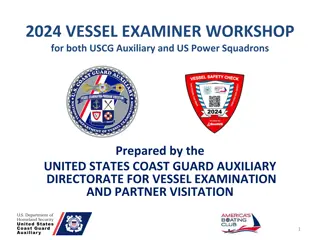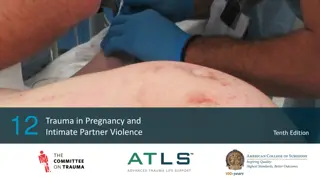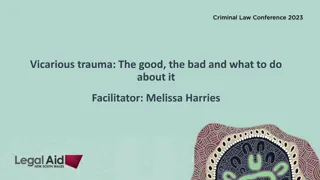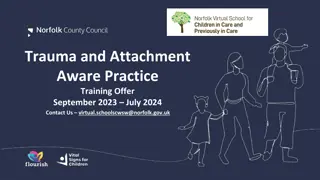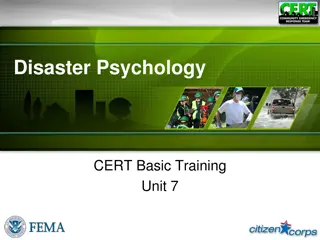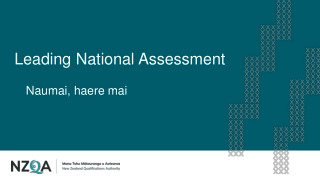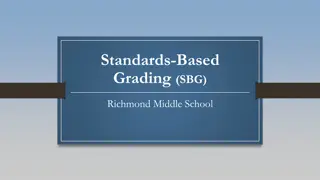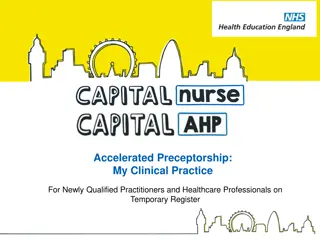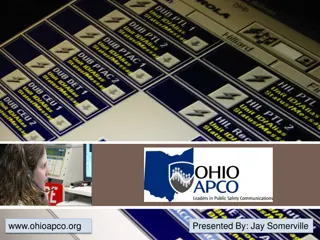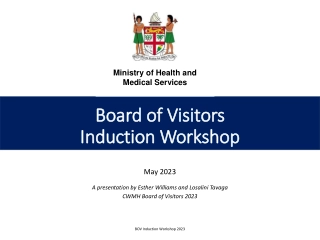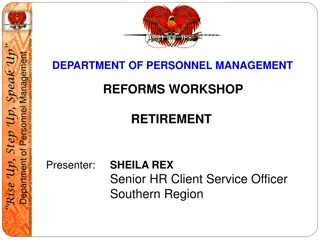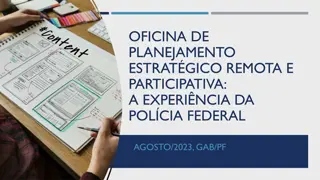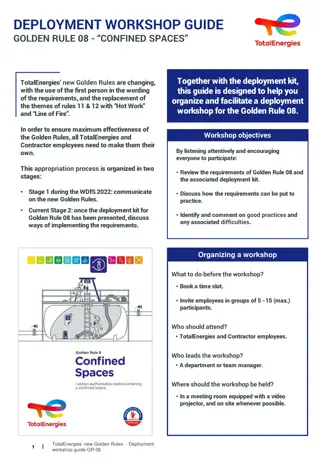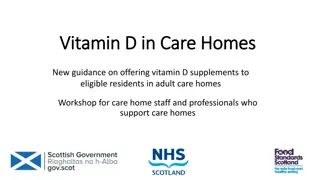Trauma Standards “Deep Dive” Workshop
Explore the new ACS requirements in trauma documentation, specialty coverage, pediatric care, Level IIIs, and more through the TSN Webinars' detailed workshop. Gain insights into loop closure documentation and compliance measures, as well as tips on how to effectively implement changes to enhance patient care quality.
Download Presentation
Please find below an Image/Link to download the presentation.
The content on the website is provided AS IS for your information and personal use only. It may not be sold, licensed, or shared on other websites without obtaining consent from the author. Download presentation by click this link. If you encounter any issues during the download, it is possible that the publisher has removed the file from their server.
Presentation Transcript
TSN Webinars Trauma Standards Deep Dive Workshop A Closer Look at New ACS Requirements for Documentation, Specialty Coverage, Peds, Level III s and More
TSN Webinars Webinar slides and replay Links will arrive by email tomorrow
TSN Webinars Angie Chisolm MBA/HCM, BSN, RN, CFRN, TCRN
Disclaimer This webinar is not intended to replace information and official guidance from the American College of Surgeons (ACS) Information provided in this webinar is not all-inclusive, but rather highlights key changes in the standards Attendees are responsible for reading the ACS standards and confirming any interpretation through the ACS COT
How to document loop closure 2022 Standards 2022 Standards 7.3 Documented Effectiveness of the PIPS Program Type II All trauma centers must have documented evidence of event identification; effective use of audit filters; demonstrated loop closure; attempts at corrective action plans; and strategies for sustained improvement measured over time. Includes: Peer review minutes Loop closure documentation (ex. PDSA) Monitoring of event rates (dashboards) OPPE Benchmarking reports (TQIP)
How to document loop closure What is loop closure? Evidence demonstrating that the identified problem has been resolved. Example: 72y M s/p GLF. Per EMS, pt lethargic with vomit around face. Cold to touch. Arrives in the ED without a trauma team activation. Adm to ICU with SDH and multiple rib fractures. Develops respiratory failure requiring intubation. Trauma and Neurosurgery consulted after admission. Problem(s) to solve (OFI): Earlier surgical intervention Earlier and more aggressive pulmonary hygiene Action plan: Revise trauma team activation criteria to include geriatric injuries with AMS from baseline Review/revise/implement pulmonary hygiene order set Loop closure: Since revision of TTA criteria go-live on Nov. 22, 2023, there have been 14 geriatric patients with AMS meeting trauma team activation criteria. 12 out of 14 patients received timely surgical evaluations (86% improvement) Since go-live of pulmonary hygiene order set on Dec 10, 2023, the incidence of respiratory failure requiring intubation has decreased from 12 cases to 3 cases (75% improvement)
How to document measures of compliance 4.15 IR for hemorrhage control Start time captured in the registry if patient receives PRBC or whole blood within first 4 hours Time interval between request (trauma flowsheet, trauma surgeon note, call service time stamp, EHR order time, paging system log, etc.) and arterial puncture (procedure note) Dashboard: Total number of hemorrhage cases requiring IR [denominator] divided by the number of cases within 60 mins (time of request to needle time) [numerator] Emergent response times (NS, Ortho, trauma) 5.17 A neurosurgery resident or APP may act as a consultant as long as there is documented communication with the neurosurgery attending, even at night Time interval between request and evaluation (trauma flowsheet, surgeon note, call service time stamp, paging system log, badge readers, etc.) Dashboard: Total number of emergent criteria [denominator] divided by number of times surgeon responded within expected timeframe [numerator] 3.1 OR response times OR staffing policy demonstrating an available OR team to meet 15- or 30-minute requirement Time interval between notification and response (must be staffed and available, aka open and ready for a patient) This can be documented with a logbook, an electronic medical record, or a badge swipe. Some EHRs include OR request time Dashboard: Total number of Class A emergent OR cases [denominator] divided by number of times OR is ready within expected timeframe [numerator] For the OR availability standard, does the patient need to be in the OR within 15 minutes?
How to document measures of compliance 4.14 Radiology read times Time interval between request (procedure note) Radiology department leaders are a great asset for tracking this information. Every action in radiology is time-stamped and reported. Not limited to TTAs, but should be focused on urgent/emergent requests request (trauma flowsheet, trauma surgeon note, call service time stamp, EHR order time, paging system log, etc.) and interpretation interpretation 5.30 / 5.31 SBIRT compliance New in 2022 standards: All trauma centers must screen all admitted patients greater than 12y/o Blood alcohol levels and Alcohol Use Disorder are recorded in the trauma registry Dashboard: Screening - Total number of admitted patients over 12y [denominator] divided by number with alcohol screening performed [numerator] Dashboard: Intervention - Total number of positive alcohol screening results [denominator] divided by number with brief intervention performed [numerator] Does the SBIRT standard include admits less than 24 hours? ACS website: All admitted patients greater than 12 years old, regardless of length of stay, must be screened. 5.29 Mental Health screening compliance Step 1 develop a protocol to screen patients at high risk for mental health problems; include a referral process Dashboard: Total number of patients meeting criteria for mental health screening [denominator] divided by number with screening performed [numerator] https://www.facs.org/for-medical-professionals/news-publications/news-and-articles/acs-brief/january-10-2023-issue/acs-releases-screening-guideline-for-mental- health-substance-use-in-trauma-victims/
General PI Systems/Operations meeting requirement?
Trauma Registry Could you clarify trauma registrar education requirements for newly hired registrars? No time frame is mentioned.
Registry Staffing 2014 Standards 2014 Standards 2022 Standards 2022 Standards CD 15.9 4.31 Trauma Registry Staffing Requirements Type II In Level I, II, and III trauma centers, One full-time equivalent employee dedicated to the registry must be available to process the data capturing the NTDS data set for each 500 750 admitted patients annually Type II - All trauma centers must have 0.5 FTEs per 200 300 patient entries* (1 FTE : 400 600) - Combined adult and peds programs must have a pediatric lead registrar *Count of entries is defined as all patients who meet NTDS inclusion criteria, and those patients who meet inclusion criteria for hospital, local, regional and state purposes
Trauma Registry Is a hospital-specific data dictionary mandated per the standards, or is it highly suggested we create one? - The standards reference ACS NTDS Data Dictionary only Is data validation by re-abstracting 5-10% of charts still a best practice, or can that number decrease? (Level 1 TQIP center) - Yes, IRR 5 to 10 charts per registrar per month. One facility remarked that they review all deaths and ISS >16 for chart selection. They also completely re-abstract one chart per registrar per month.
Standards for pediatric care 2.6 Adult Centers Admitting Pediatrics Type I - Adult centers that admit more than 100 children under 15 years of age must have: Pediatric emergency department area Pediatric ICU Appropriate resuscitation equipment outlined in the peds readiness toolkit - Does not include transfers out 4.26 Medical Specialists Type II - Applies to Levels I, II, PI, PII - Internal Medicine or or Pediatrics continuously available 4.27 Child Abuse (NAT) Physician Type II **NEW CD - Level I and II peds must have board certified / eligible in child abuse or or special interest in child abuse 5.10 Pediatric Readiness Type II - All trauma centers are required to perform a pediatric readiness assessment during the verification cycle - All trauma centers are required to have a plan to address identified gaps - There is no threshold for expected assessment results, however EMSC research shows that high pediatric readiness (>87 points) results in lower mortality https://emscimprovement.center/domains/pediatric-readiness-project/ - Pediatric readiness applies to all hospitals, regardless of trauma center designation level Pediatric readiness assessment: https://www.pedsready.org/ Other resources to address deficiencies: https://emscimprovement.center/domains/pediatric-readiness-project/readiness-toolkit/
Coverage requirements 4.22 Ophthalmology Type II Levels I, II, PI, PII Must have continuous coverage 24/7/365 Sporadic gaps in coverage due to vacation/conference attendance, etc. must be addressed with a contingency plan Required to provide 12 months of call schedules at the time of the site visit Contact ACS for guidance 4.21 Hand and Plastics Type I Levels I, II, PI, PII Must have continuous coverage 24/7/365 expertise implies that there is a surgeon credentialled to provide acute trauma care for the services listed Sporadic gaps in coverage due to vacation/conference attendance, etc. must be addressed with a contingency plan Required to provide 12 months of call schedules at the time of the site visit
Coverage requirements 4.24 Craniofacial (OMFS) Type I Levels I, PI Must be able to care for patients with acute facial fractures Specialists include otolaryngology, oral maxillofacial, or plastic surgery Options for coverage include a single specialty covering all injuries, a rotating schedule, or involvement of specific expertise depending on the nature of the injury Locums Not addressed in the standards 2018 ACS position statement summary: must meet all requirements to be on the trauma call panel
Neurosurgery Is there a requirement for back-up call? - Level I and II centers must have BC/BE neurosurgeons continuously available for the care of neurotrauma patients. - Level III-N centers must have BC/BE neurosurgeons - Level IP centers must have at least one BC/BE neurosurgeon who has completed a pediatric neurosurgery fellowship - Continuously available is defined as 24/7/365 with no gaps in coverage. ACS website: A neurosurgery published backup call schedule is not required to meet this standard. How to capture response times? - Time interval between request badge readers, etc.) - ACS website: Evaluation within 30 minutes is required for the injuries specified in the standard and can be done remotely. request and evaluation evaluation (trauma flowsheet, surgeon note, call service time stamp, paging system log,
TSN Webinars Subscribe to our newsletter > Visit www.trauma-news.com > Click the Subscribe Here box
Level III trauma centers Can a Level III center have NSGY availability without requiring 24/7/365 coverage? - Level III-N centers are those that provide neurotrauma care for patients with moderate to severe TBI, defined as GCS of 12 or less at the time of emergency department arrival. - 5.19 5.19 Level III-N centers must have a neurotrauma contingency plan that includes the potential diversion and must implement the plan when neurosurgery capabilities are encumbered, overwhelmed, or unavailable - ACS website: If a trauma center admits any patients with moderate to severe TBI, they must apply as Level III-N, and will be required by standard 4.10 to have board-certified or board-eligible neurosurgeons. How do Level III centers demonstrate access to the OR for nonemergent ortho trauma? - OR scheduling policy that details how cases are posted - OR schedule showing orthopedic cases scheduled, not as add-on in the evenings Surgical coverage requirements for Level IIIs - Trauma Surgery 24/7/365 with back up schedule or back up plan - Orthopedic surgery 24/7/365 - Neurosurgery (LIII-N) Geriatric liaison requirements for Level IIIs - 4.5 4.5 Applies only to Levels I and II
Level III trauma centers 3.5 Medical Imaging Type I - - Does the patient need to be in CT within 30 minutes or does CT need to be available within 30 minutes? - In Level III centers, the services must be available 24 hours per day and be accessible for patient care within the time interval specified CT 30 mins - CT needs to be available within 30 minutes to accept the patient. If the patient s condition warrants a CT within 30 mins, then compliance is measured from time of request to time patient in CT 5.29 Mental Health Screening Type II - Level III centers must have a process for referral to a mental health provider when required 5.30 / 5.31 SBIRT Type II - All trauma centers must screen - All trauma centers must provide a brief intervention - Level III centers must have a mechanism for referral Dashboard: Screening - Total number of admitted patients over 12y [denominator] divided by number with alcohol screening performed [numerator] Dashboard: Intervention - Total number of positive alcohol screening results [denominator] divided by number with brief intervention performed [numerator] screen all admitted trauma patients greater than 12 years old; compliance at least 80% brief intervention for patients who screened positive; compliance at least 80% referral if brief intervention is not available as an inpatient
Level III trauma centers 4.35 PI Staffing Requirements Type II - All trauma centers must have at least 0.5 FTE dedicated to performance improvement (PI) when the annual volume of registry patient entries exceeds 500 patients. When the annual volume exceeds 1,000 registry patient entries, the trauma center must have at least 1 FTE PI personnel. 5.21 Orthopedic Surgeon Response Type I - All trauma centers must have an orthopedic surgeon (ortho resident or APP) respond to the bedside within 30 minutes of request for the following: Hemodynamically unstable, secondary to pelvic fracture Suspected extremity compartment syndrome Fractures/dislocations with risk of avascular necrosis (e.g. femoral head or talus) Vascular compromise related to a fracture or dislocation Trauma surgeon discretion **if Ortho resident or APP respond instead of the surgeon, there must be documented communication with the surgeon Can the ED provider document conversations with specialist or does there need to be a note by the surgeon? - This is not addressed in the ACS standards, except for 5.4 (TS response), 5.21 (Ortho response). Review your hospital s bylaws for expectations of consultation response and documentation of consultations.
Guidance for Level IV trauma centers How does the Grey Book New ACS Requirements for Documentation affect Level IV Trauma Centers and our survey requirements? - ACS website: The COT is giving this careful consideration and will determine how best to address the concerns. In the meantime, the 2014 Resources for Optimal Care of the Injured Patient (aka, the Orange Book) contains Level IV criteria that are still relevant, current, and can continue to be used. We are a state designated Level V. How does this impact us? - The ACS 2014 Level IV criteria is still relevant, current and can continue to be used; however, at a minimum, state standards should be followed Does the CAISS requirement apply to Level IV facilities? - CAISS was not required in the 2014 standards - no current information currently available to indicate if CAISS will be required in the revised standards How does the Grey Book New ACS Requirements for Documentation affect Level IV Trauma Centers and our survey requirements? - Currently, the new ACS requirements do not affect Level IV survey requirements
Pre-Review Questionnaire (PRQ) 4.14 Radiologist Access Type I Does the radiologist access standard apply only to trauma activations or to all trauma patients in the registry? - the standard is not limited to trauma activations When asking for job descriptions, are they really looking for a CV and a display of their expertise instead? - the only request for job descriptions in the PRQ is for Injury Prevention staff - Several roles and responsibilities for various staff and physicians are required, not the CVs What are paperwork specifics for Injury Prevention? What must be submitted for programs and events, etc.?
Pre-Review Questionnaire (PRQ) Can you clarify the required documents for 2.10 and 2.11? R&R [responsibilities and reporting] vs role profile of TPM? - The requirement is to upload the roles and responsibilities document for the TPM position, showing the allocation of the FTE s responsibilities (PI, Injury Prevention, etc.) is the TPM also covering these roles? - The role profile could be the same document and may be the job description In a Level III, if the co-director of the ICU is the TMD, would I upload the TMD roles & resp. in the PRQ? - Yes PRQ reminders: 12 months of call schedules for all surgical specialties ATLS certificate numbers are required Board certification ID s One (1) completed OPPE required
Preselected Chart Review (PCR) PCR questions about adult vs peds. Specifically, do they need two separate chart lists? Select the number of charts based on the information below: Standard visits: 25 charts Combined programs (Adult Level I or II with Pediatric Level II): 25 charts for adults and 15 charts for peds Concurrent programs (Level I adult and Level I peds): 25 charts for adults and 25 charts for peds Focused visits: 25 charts For chart selection, what is meant by "subcategories ? - If a patient is included in the Death list, but also meets criteria for inclusion in NSA the NSA is the subcategory. You cannot duplicate charts in more than one category How to request information for medical records from HIM - Refer to Appendix 2 Medical Record Review for details on how to organize the medical record
Nursing education 8.2 Nursing Trauma Orientation and Education Type II All trauma centers must provide trauma orientation to new nursing staff caring for trauma patients. Nurses must participate in trauma CE corresponding to their scope of practice and patient population served. Examples of nursing orientation may include: Examples of nursing education may include: Center-developed educational program that integrates PIPS-identified issues Education specific to patient population served ATCN Advanced Trauma Care for Nurses TNCC Trauma Nursing Core Course PCAR Pediatric Care After Resuscitation TCAR Trauma Care After Resuscitation TNATC Transport Nurse Advanced Trauma Course Nursing orientation may include simulation sessions, online learning, conferences, and annual training events.
Disaster management 2.3 Clarify surgical response to disaster in hospital disaster plan - The surgical response must outline the following: Critical personnel Means of contact Initial surgical triage (including subspecialty triage when appropriate) Coordination of secondary procedures 4.35 Disaster Management and Emergency Preparedness Course Type II **NEW CD - Level I adult/peds the trauma surgeon liaison to the disaster committee must complete the DMEP course at least once Do both the trauma surgeon and orthopedic liaison need to take the EM courses? - Level I Adult and Pediatric centers must include an orthopedic surgeon from the trauma call panel as a member of the hospital s disaster committee. - In Level I Adult and Pediatric centers, the trauma surgeon liaison to the disaster committee must complete the DMEP course
Other standards 5.4 Trauma Surgeon Response to Highest Level of Activation Type I Why patient arrival versus activation time? This is not a new standard and has always been based on patient arrival In the Orange Book, we provided feedback on patients transferred in/out. Is this still required? What are the requirements of trauma centers to proactively share patient follow-up information with EMS agencies? 7.10 Prehospital Care Feedback Type II - All trauma centers must have a process of reviewing and providing feedback to: EMS agencies, related to accuracy of triage and provision of care Referring providers, related to the care and outcomes of their patients and any potential opportunities for improvement in initial care
TSN Webinars Your Questions Click the Q&A icon
TSN Webinars Thank You Watch email tomorrow Take exit survey
